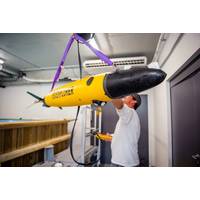
CASE STUDY: Nortek, Alseamar aim to make Oceanographic Data more Accessible
;t provide a complete picture of the currents in the whole area. Mounting an ADCP on a moving surface vessel is a good option for many, but some users are put off by the work and cost involved with hiring and crewing a vessel.Profiling a Large Volume of WaterHowever, rapid advances in underwater glider technology have provided an exciting new alternative. Slimline battery-powered gliders are capable of cruising through the oceans for months at a time, carrying a multitude of instruments measuring many facets of the underwater world close up.Typically, gliders move in a sawtooth, or wave-like, movement
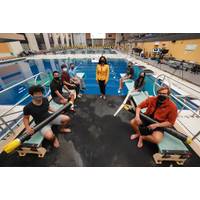
Team at Purdue Advances Work on New Glider, ROUGHIE
A team of researchers at Purdue University are working on enhancing glider technology to make the study of the world's waterways more efficient and productive.The team is looking to design and build "highly maneuverable, low-cost underwater gliders that operate silently," with components and sensors that can be easily swapped out or added according to a wide range of mission specifications.“Our goal is persistent operation of mobile robots in challenging environments,” said Nina Mahmoudian, associate professor of mechanical engineering. “Most underwater robots have

Measuring the Hostile Ocean Beneath Hurricanes
upwelled water. Thus, knowing subsea temperatures is crucial information for storm forecasting. Additionally, knowing the currents and their shear at different phases of a storm gives greater insight into the dynamics of air/sea interactions.Teledyne Webb Research were pioneers of unmanned undersea glider technology. Slocum gliders advanced rapidly from experimental prototypes to reliable mobile platforms that have operated worldwide in diverse upper-ocean activities.Fig.2: Teledyne Slocum glider in tropical waters.Credit: Teledyne MarineSlocum gliders change their volume to sink or rise; attached wings
MTS Appoints Dr. Josh Kohut as VP
and was fundamental to establishing the US Hurricane Glider Sentinel Program in 2018.Since 2010, Josh has been an author on nine peer-reviewed publications in the MTS Journal. He has been the faculty advisor to the Rutgers MTS student section since 2013 and is the founding Director of the MTS Glider Technology Camp at Rutgers.Kohut will take over the position of VP of Education from Liesl Hotaling
MTS Welcomes Two New Board Members
and was fundamental to establishing the US Hurricane Glider Sentinel Program in 2018.Since 2010, Kohut has been an author on nine peer-reviewed publications in the MTS Journal. He has been the faculty advisor to the Rutgers MTS student section since 2013 and is the founding Director of the MTS Glider Technology Camp at Rutgers
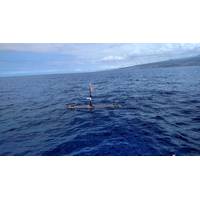
Wave Glider to Help Protect Marine Sanctuaries
scientists on projects ranging from ocean acidification, to measuring Arctic waves to collecting storm intensity data from the surface of the hurricane,” said Gary Gysin, President and CEO of Liquid Robotics. “This collaboration takes our partnership to a new level as we provide Wave Glider technology and services to help preserve, protect and sustain the Hawaiian and American Samoa marine sanctuaries and ocean we all hold dear.” This partnership provides services to the National Marine Sanctuary System’s six sanctuary units, as well as NOAA’s National Ocean Service
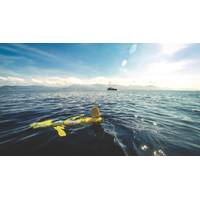
Delving Deeper with AUVs
truly transform the way the industry conducts underwater installation, inspection, repair and maintenance work. The current generation of gliders are capable of exploring water depths of 1,000m, travelling at approximately 1-2 nautical miles per hour. Future developments in glider technology could see them operate with long endurance, extreme depth, or rapid response capabilities, while development of new sensors will further expand the parameters that can be measured. It is clear that gliders will continue to play an increasingly important role in the exploration and

PLOCAN Glider School 2016
open waters, and takes place at the Oceanic Platform of the Canary Islands (PLOCAN) headquarters in Telde, Gran Canaria. The main goal of the school is to provide the opportunity to a selected group of the attendees, to start in some cases and expand in others their knowledge related to ocean glider technology. Leading companies from within the marine technology sector, such as ocean glider and related sensor payload manufacturers, as well as international institutions as reference end-users of such technology, are all directly involved with the school, teaching some didactical contents and supporting
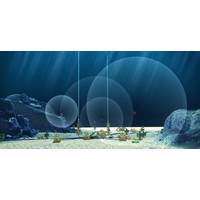
SUT to Host Deepwater Sessions at Offshore Europe
safe exploration and production at extreme depths. The variety of new developments being presented during these two sessions highlights just how much progress is being made and the ambitions of the industry to push boundaries and open up access to new reserves. “The next generation of glider technology for example is looking to explore at depths of 5,000 metres for three months at a time, which is not dissimilar to space exploration, only it’s on the seabed.” SUT will also be available at Offshore Europe on stand 6D19.



 February 2024
February 2024





